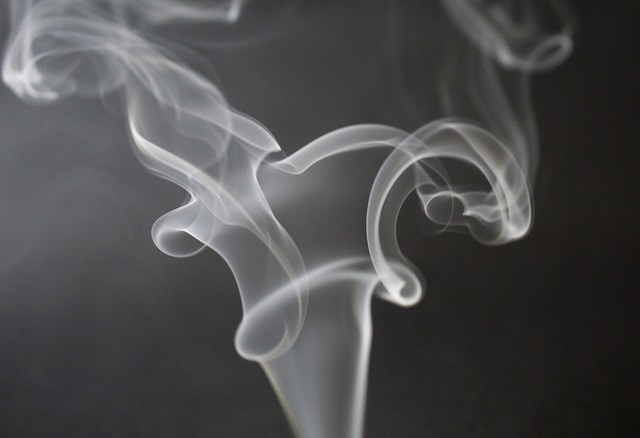Drinking youth – psychopathological disorders
Treatment programs for adolescents with alcohol related disorders should be targeted not only at eliminating alcohol consumption and the use of other psychoactive substances, but also at improving other mental disorders.
Among adolescents with disorders related to alcohol drinking (e.g. alcohol abuse or addiction), frequent co-occurrence of psychopathological symptoms (i.e. mental disorders other than disorders related to drinking alcohol and using other psychoactive substances) is observed. Commonly occurring co-morbidities include social disturbances (e.g., antisocial disorders) and those that cause deep depression or aggravate anxiety (i.e., negative mood disorders) (Bukstein et al., 1989; Clark and Neighbors, 1996). One study found that more than 80% of juvenile addicts or alcohol abusers also have other mental disorders (Rohde et al., 1996). In the group of adolescents with alcohol addiction undergoing drug treatment, 89% were also found to have either behavioral disorders (i.e. antisocial disorders characterized by aggression, property damage, fraud or theft, and non-compliance with applicable rules of behavior), or the so-called major depression (i.e. negative mood disorder characterized by major depressive episodes) or both together (Clark et al., 1997). Understanding the impact of co-morbidities on the occurrence and course of alcohol-related disorders can contribute to the improvement of preventive and curative measures for adolescents with alcohol-related problems.
addiction recovery gonline
The occurrence of alcohol-related disorders in adolescence may be an important indicator of other problems. Clark et al. (1998c) found that compared to adult men who developed disorders related to the use of psychoactive substances (including alcohol), adolescents with these disorders and adult men who developed these disorders during adolescence were characterized by more frequent the occurrence of destructive behavior disorders and major depression, as well as a faster transition from the beginning of use to addiction to a given substance.
Antisocial Disorders. definitions
Antisocial disorders include behavioral disorders, oppositional defiant disorders and anti-social personality. Developed by the American Psychiatric Association, the Diagnostic and Statistical Manual of Mental Disorders, Fourth Edition (DSM-IV) (American Psychiatric Association, 1994) defines behavior disorders, which are the most common form of mental disorders in adolescents with alcohol-related disorders as a pattern of behavior violating basic the rights of other people or those who do not respect the social principles fundamental to the age group. Behaviors that may indicate the occurrence of these disorders fall into four categories: (1) aggression against humans and animals, (2) property damage, (3) fraud or theft, and (4) significant violations of applicable rules. Severe behavioral disorders are often preceded by opposition-rebellious disorders (Loeber et al., 1993). DSM-IV diagnostic criteria for oppositional defiant disorder include less severe anti-social behavior than disorder behavior, such as quarrels, loss of self-control, violation of applicable rules, and outrageous anger or vengeance (American Psychiatric Association, 1994) . DSM-IV diagnostic criteria for anti-social personality, common among adults with alcohol-related disorders, require the onset of behavioral disorders before the age of 15, as well as repeated demonstration of anti-social characteristics in adulthood (American Psychiatric Association, 1994).
Disorders and drinking alcohol
Behavioral disorders repeatedly precede and predict alcohol drinking or related disorders (Clark et al., 1998b; Lynskey and Fergusson, 1995) and may actually contribute to alcohol-related problems. These disorders may also play a role in the relationship between ADHD and alcohol related disorders. Adolescents with behavioral disorders are more likely to engage in uncontrolled impulsive behavior (i.e., they have impaired behavioral control), as well as more often seek new experiences (i.e., they have an increased need for new sensations). As a result, they can start drinking at a younger age, which increases their risk of alcohol-related problems (Lewis and Bucholz, 1991).
On the other hand, alcohol-related disorders can also promote anti-social behavior, contributing to oppositional and rebellious disorders and behavioral disorders. Drinking alcohol, for example, can contribute to impairing the ability to make proper judgments and seeking the company of peers who conflict with the law, and both of these may exacerbate anti-social behavior.
The third theory of the relationship between behavioral disorders and alcohol-related disorders implies that both categories of disorders have common risk factors (see figure). According to this explanation, known as the theory of problem behavior, both the occurrence of anti-social behavior and the early start of drinking alcohol can be attributed to a combination of environmental factors, such as family situation, socioeconomic status and parental influences, and individual characteristics that increase the vulnerability of adolescents problems. In this concept, drinking alcohol is one of many behavioral deviations caused by common risk factors, such as insufficient parental support and supervision, joining a non-compliant peer group, and poor academic performance. These common risk factors can affect the severity and effects of alcohol-related disorders and concurrent social abnormalities in an independent or synergistic manner. The results of several long-term studies conducted among adolescents and young adults support the theory of problem behaviors (Donovan and Jessor, 1985).
Treatment
Juveniles with alcohol related disorders who have behavioral problems are more difficult to treat than those who have no behavioral problems. The presence of these disorders makes it possible to predict a greater risk of alcohol consumption after treatment and the possibility of antisocial personality (Brown et al., 1996; Meyers et al., 1995). Some strategies for treating adolescents with both types of disorder have been associated with therapeutic strategies aimed at changing behavior. These strategies include family interventions, programs to control behavior in a variety of situations (using incentives in the form of material rewards or special privileges, and social reinforcements to encourage proper behavior), as well as social skills training (Bukstein, 1995).
Adolescents with severe behavioral problems and serious alcohol-related problems usually require more intensive treatment strategies. Multi-system therapy proved to be effective in such situations, developed by Henggeler et al. (1998). This therapy is based on an intensive, multidimensional approach to numerous problems and risk factors, combining interventions at the level of family, peer group, school and local community with individual treatment. Therapeutic sessions are conducted at home, at times corresponding to household members, which results in fewer missed appointments and greater family participation in the treatment process (Henggeler et al., 1996).
Using strategies developed on the basis of eclectic theoretical assumptions, family interventions are shaped to strengthen the effectiveness of parental care and family cohesion. Parents are advised to look more closely at their child’s peer contact and use incentives to improve their academic performance. Individual interventions towards adolescents focused on skill training and behavior change (Santos et al., 1995). Multi-system therapy has been evaluated in controlled studies that have demonstrated its effectiveness in reducing anti-social behavior, reducing the number of stops associated with psychoactive substances, and reducing the level of ingestion of these substances (Henggeler et al., 1998).
In addition to therapeutic approaches focused on behavioral change, treatment of adolescents with drinking and behavioral disorders may also include the use of pharmacological agents. Adolescents with behavioral disorders often show impulsiveness, aggression or anxiety, and all these conditions can be alleviated with medication. In fact, the frequent comorbidity of behavioral disorders with a hyperkinetic disorder (i.e., ADHD) may indicate that adolescents with behavioral disorders will be successful in treating ADHD. Psychostimulants such as methylphenidate or dextroamphetamine can work effectively (Klein et al., 1997), but their use to treat behavioral disorders is controversial due to the risk of abuse or illegal resale of these drugs. The use of pharmacological treatment in adolescents with behavioral disorders has not yet been the subject of comprehensive research. Research is needed to determine which juvenile groups may benefit most from drug treatment.




